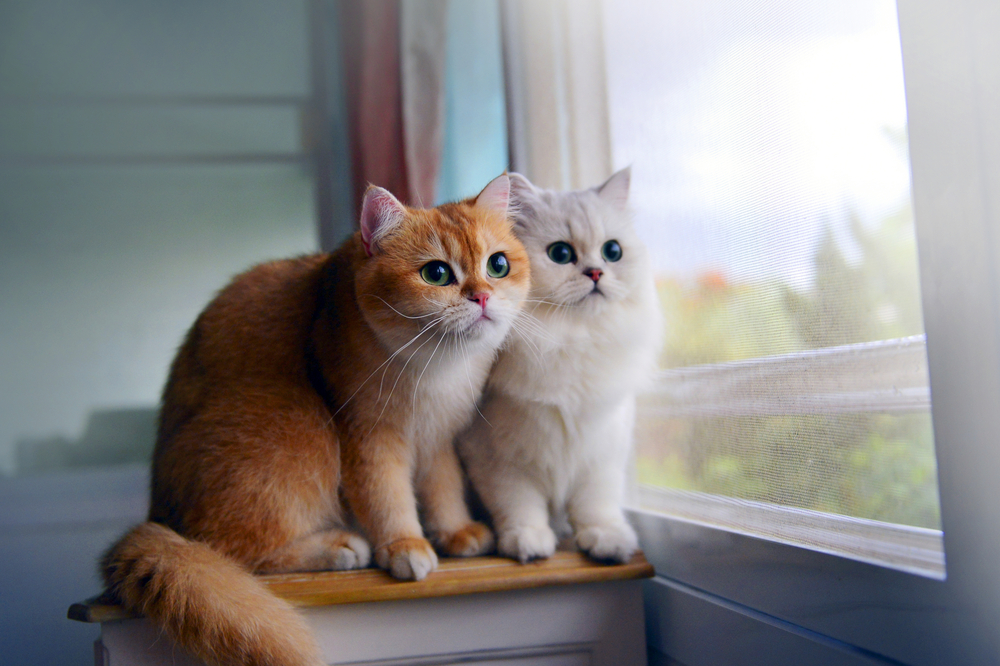If you are a cat lover, you know how fascinating cats are. Your cat’s behavior is often an enigma, and likely leaves you sometimes scratching your head. While you will never know why your cat does some of the crazy things they do, our Caldwell Animal Hospital team wants to provide fun facts about these interesting creatures, to give you insight into what makes them tick.
Fact #1: Cats spend about 70% of their lives sleeping
Cats generally spend approximately 15 hours a day sleeping, with some sleeping up to 20 hours in a 24-hour period. Interesting facts about a cat’s sleeping habits include:
- Cats are crepuscular — Cats are crepuscular, which means they are most active at dawn and dusk. The cat’s retina contains about eight times more rod cells than a human’s, and these photoreceptors are more sensitive to low light. In the wild, cats hunt at dawn and dusk when they can see better, and when predators are less likely to see them. Your cat may not have to hunt for their dinner, but they are still instinctively more active when they feel they should be hunting. This leaves the daylight and nighttime hours for cats to conserve their energy.
- Cats have a polyphasic sleep pattern — Cats sleep multiple times each day rather than in one, long stretch. Cat naps average about 78 minutes in length, and cats cycle between light dozing and deep sleep during these naps.
Fact #2: Cats spend 30% to 50% of their day grooming
A mother cat’s first job after giving birth is to clean her kittens. Kittens emulate their mothers and typically start self-grooming when they are a few weeks old. As a result, cats are usually extremely clean animals. Grooming serves several purposes for cats. These include:
- Cleaning and lubricating the coat — When cats groom, barb-like structures on their tongue stimulate their skin’s sebaceous glands, which spread sebum throughout their coat, and the natural oils help the cat stay warm and dry. Self-grooming also removes dirt and parasites from their coat.
- Hiding scent — Most predators track prey through scent, and grooming helps tone down the cat’s scent.
- Cooling effect — The cat’s saliva evaporates from their skin, causing a cooling effect.
- Showing affection — Cats groom each other and their humans to show affection.
Fact #3: The cat’s purr can promote healing
Most people assume a purring cat is a contented cat, but cats also purr when they are sick, stressed, hurt, or giving birth. Cats produce a purr when they dilate and constrict the part of their larynx that surrounds the vocal cords, causing the air to vibrate when they inhale or exhale. The vibrations occur at frequencies between 20 to 150 Hz, which are established healing frequency levels used in therapeutic medicine for humans, improving bone density, and promoting healing. Cats may use purring as a low-energy mechanism to keep bones and tissues in good condition while they rest.
Fact #4: Adult cats don’t meow at each other
All kittens meow to get their mother’s attention, but adult feral cats communicate through scent marking by rubbing against or urinating on objects. This allows them to send a message without physically contacting other area cats. A human’s sense of smell is not nearly as sensitive as a cat’s, so domesticated cats developed a way to communicate with their owners. Your cat meows at you because they have learned that the vocalization gets your attention. Many cats develop a meowing repertoire to convey different needs and feelings.
Fact #5: Whiskers are integral to the cat’s everyday life

Whiskers are coarser and thicker than regular hair, and their roots are three times deeper. Whiskers are strategically located above the cat’s eyes, on their chin, on their forelegs, near their ears, and above their upper lip. The exact whisker pattern varies by breed, but most cats have 12 whiskers arranged in four rows on each cheek. Whiskers are more sensitive than regular hairs, because the follicles are supplied with blood vessels and nerves—whiskers are considered as sensitive as a human’s fingertips. Whiskers serve many important functions, including:
- Balancing the cat’s body — Special sensory organs, called proprioceptors, are located at the whisker’s end, and send messages to the brain regarding the cat’s body and limb position, so the cat always knows the location of every body part.
- Helping the cat understand their surroundings — When a cat approaches an object, air currents are triggered that bounce back when they hit the object. Whiskers detect the vibrations caused by the air current changes, and act like radar detectors to help the cat locate objects, such as their food bowl or favorite toy, at night.
- Warning the cat — When a small particle, such as a dust speck, hits the cat’s whisker above their eye, the cat knows to blink to protect their eye from injury. Whiskers can also help a cat avoid getting stuck in a tight spot, because the radar feature can determine if the cat can fit.
Because whiskers are so important to your cat’s ability to safely function, you should never cut or pluck them. You should also provide your cat with food and water dishes with a flatter, broader design to avoid irritating their whiskers.
Cats are extremely interesting creatures, and hopefully these insights will help you understand your cat better. If your cat is exhibiting concerning behavior, contact our Caldwell Animal Hospital team, so we can determine the cause.







Leave A Comment